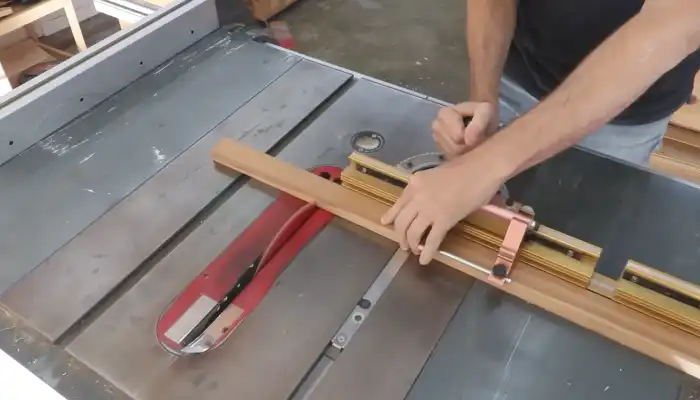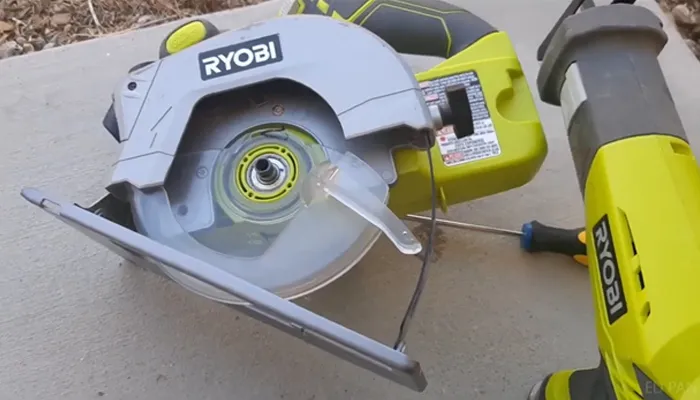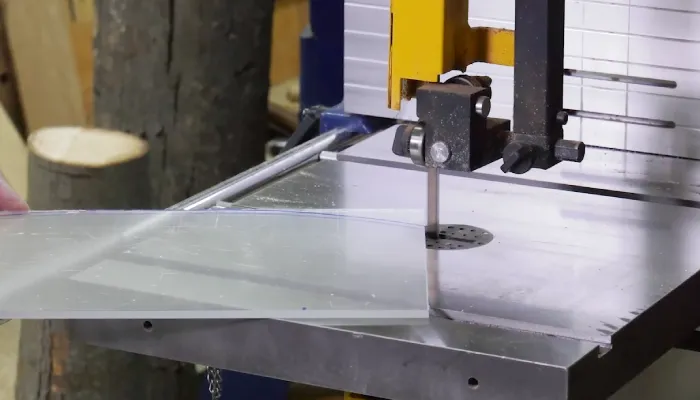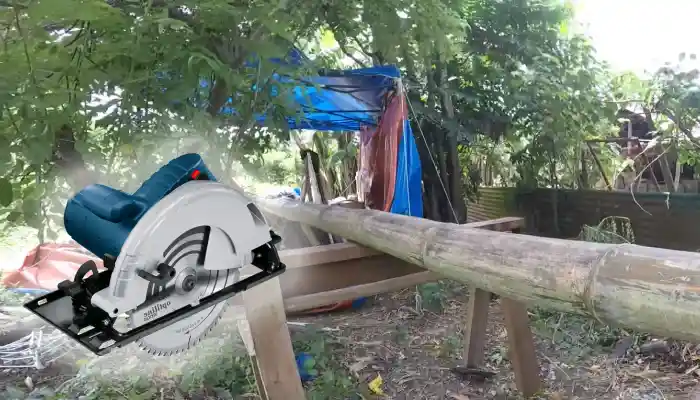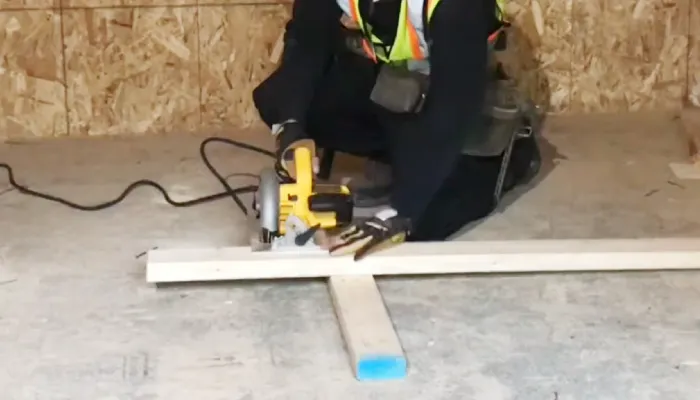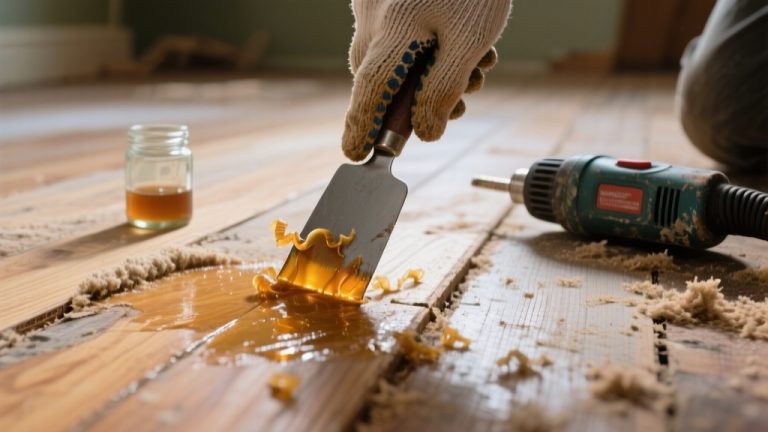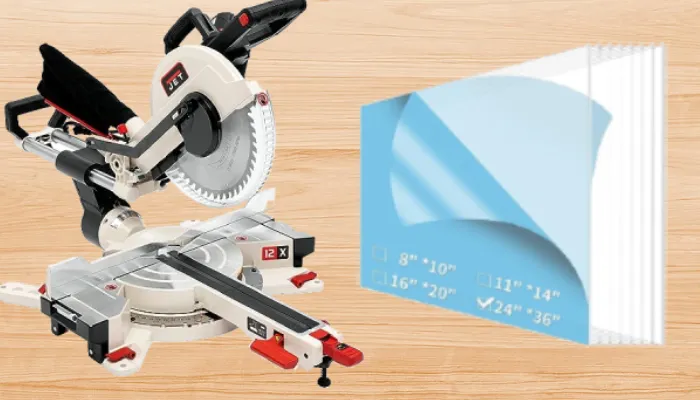Why Is My Table Saw Smoking: 7 Reasons With Solutions
Woodworking enthusiasts and professionals alike are no strangers to the occasional challenge of a smoking table saw. A smoking table saw not only disrupts your woodworking process but also poses potential safety risks.
Understanding the reasons behind this issue and how to address it is crucial for maintaining a safe and efficient workshop.
One possible cause could be a dull blade, which can generate excessive friction and heat. Another factor could be a dirty blade, as sawdust and debris can accumulate and hinder the blade’s performance. Incorrect blade alignment or height can also lead to smoking, as can a bent blade.
Here, I will discuss these causes and suggest practical solutions to ensure your table saw remains smoke-free and in optimal working condition.
Why Is Your Table Saw Smoking: Possible Reasons and Solutions
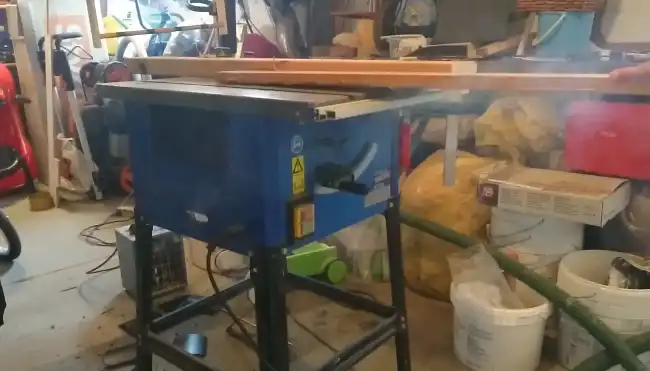
Understanding the reasons for your wood cutting table saw smoking, there are several key points to consider. I listed here some of the most common causes and solutions:
- Dull blade
- Dirty blade
- Incorrect blade alignment
- Bent blade
- Inadequate feed speed
- Wood tension and quality
- Mechanical issues
No 01. Dull Blade
According to my research, two factors can lead to a dull blade: prolonged use or hitting a nail or hard object.
Prolonged use wears down the sharp edges of your blade, leading to increased friction when cutting wood. Hitting a nail or hard object can cause chips and gouges on your table saw blade’s teeth.
I think, to solve this problem, the dull blade should be sharpened or replaced. In addition to reducing friction and heat, a high-quality table circular saw blade sharpener improves the table saw’s cutting efficiency and prevents smoking.
No 02. Dirty Blade
A dirty blade on your wood-cutting table saw can cause smoking and decrease cutting performance. When sawdust and resin accumulate on the blade’s teeth, it creates friction during cutting, generating excessive heat and smoke.
To ensure the proper functioning of your saw, cleaning the blade and removing sawdust and resin buildup regularly is essential. I recommend scrubbing the blade’s surface with a blade-cleaning solution or a stiff brush. Make sure to always wear protective gloves.
No 03. Incorrect Blade Alignment
When the blade isn’t properly aligned with the fence or miter gauge, it can result in uneven cuts and increased friction. This increased friction generates heat, which can cause the wood to smoke. Additionally, misaligned blades can lead to binding, kickback, and potential accidents.
To solve this issue, ensure your blade is correctly aligned with the fence or appropriate digital angle gauge. Use a square or alignment tool to make necessary adjustments and maintain proper alignment. Also, I suggest regularly checking and adjusting the alignment to avoid smoking and ensure clean and efficient cuts.
Additionally, setting the blade height too low or too high can result in friction and overheating, which can cause the wood to smoke and potentially catch fire.
It’s crucial to adjust the blade height to the manufacturer’s recommended settings for the cut you’re making to avoid this. This will ensure that the blade is at the optimal height for efficient and safe cutting.
No 04. Bent Blade
A bent blade can lead to smoking as it cuts unevenly, causing increased friction and generating heat. One possible cause of a bent blade is accidental contact with a foreign object during cutting. Using excessive force or improper cutting techniques can also result in blade bending.
I believe replacing the bent blade with a new, straight one is crucial. Regularly inspecting the blade for any signs of damage and ensuring proper cutting techniques can help prevent blade bending in the future.
No 05. Inadequate Feed Speed
When the feed speed is insufficient, the blade has prolonged contact with the wood, resulting in overheating and smoking. Maintaining a consistent and appropriate feed speed for the type of wood you’re cutting is important.
Cutting too slowly can cause excessive friction and heat buildup, leading to smoking. On the other hand, cutting too quickly may cause the blade to struggle, resulting in the same issue.
To prevent smoking due to inadequate feed speed, I strongly suggest adjusting the feed rate according to the type and thickness of the wood being cut.
No 06. Wood Tension and Quality
Wood tension and quality are significant factors contributing to the smoking of your wood-cutting table saw. When wood is under tension, it can pinch the blade, increasing friction and generating heat. This friction causes the burning wood to smoke.
Additionally, the quality of the wood plays a role in smoking. Wood types with high resin content, such as pine, can produce more smoke when cut.
To prevent smoking due to wood tension, it’s important to ensure the wood is properly dried and acclimated before cutting. Also, check the tension of the wood using a straight edge to ensure it is free from warping.
No 07. Mechanical Issues
The motor is a crucial component of the saw, responsible for powering the blade and providing the necessary torque. When the motor becomes overheated, it can produce smoke due to the excessive heat. Various factors, such as a lack of proper ventilation or a build-up of dust and debris around the motor can cause this.
I urge you to ensure that the motor is properly ventilated and that any debris is cleared away. Regular maintenance, such as lubricating the motor bearings, can help prevent overheating and smoking.
Can using an extension cord lead to smoking in a table saw?
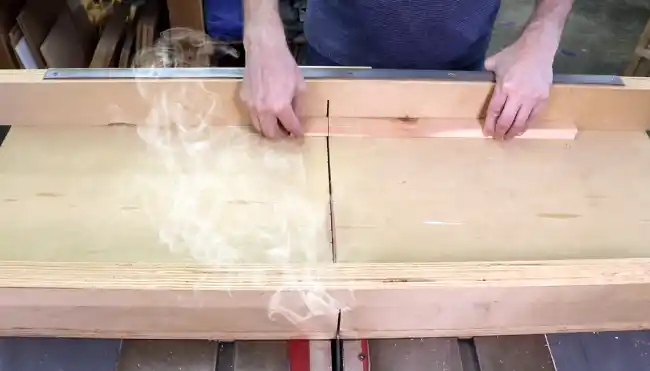
Using an inappropriate or inadequate extension cord can lead to smoking in a table saw. When the extension cord can’t handle the power requirements of the saw, it can result in voltage drop, increased resistance, and overheating in the motor. This overheating can cause the saw to emit smoke, indicating a potential problem.
I recommend using a cord specifically rated for the power needs of the table saw to avoid these issues. A cord with a sufficient gauge size and amp rating will ensure the power is delivered consistently and safely to the saw, preventing overheating and potential damage.
Can smoking from a table saw cause health issues?
Smoking from a table saw can potentially lead to various health issues. Wood smoke emitted by the saw blade contains harmful organic chemicals that, when inhaled over time, can cause respiratory problems, such as coughing, wheezing, and shortness of breath.
Additionally, the smoke can irritate the eyes and throat, leading to discomfort and inflammation. Prolonged exposure to wood smoke may also result in frequent headaches.
Keep Your Table Saw Smoke-Free
I believe understanding the reasons behind your wood-cutting table saw smoking is crucial for both your safety and the longevity of your equipment.
By identifying common causes, such as dull blades, improper alignment, or using low-quality wood, you can take appropriate measures to prevent smoking and potential health issues.
Don’t forget that prompt action and regular maintenance are key to preventing smoking safeguarding both your table saw and your well-being. With these insights, you’re well-equipped to tackle this common issue and ensure that your woodworking projects proceed smoothly and without any smoke.

